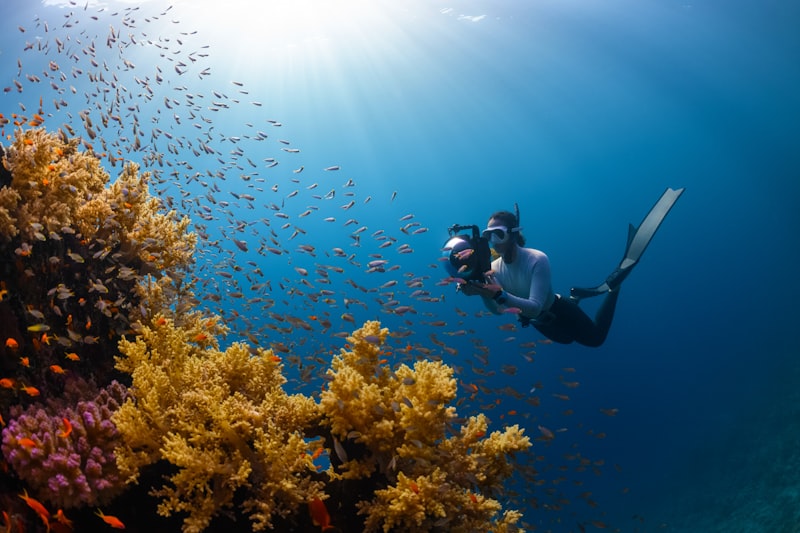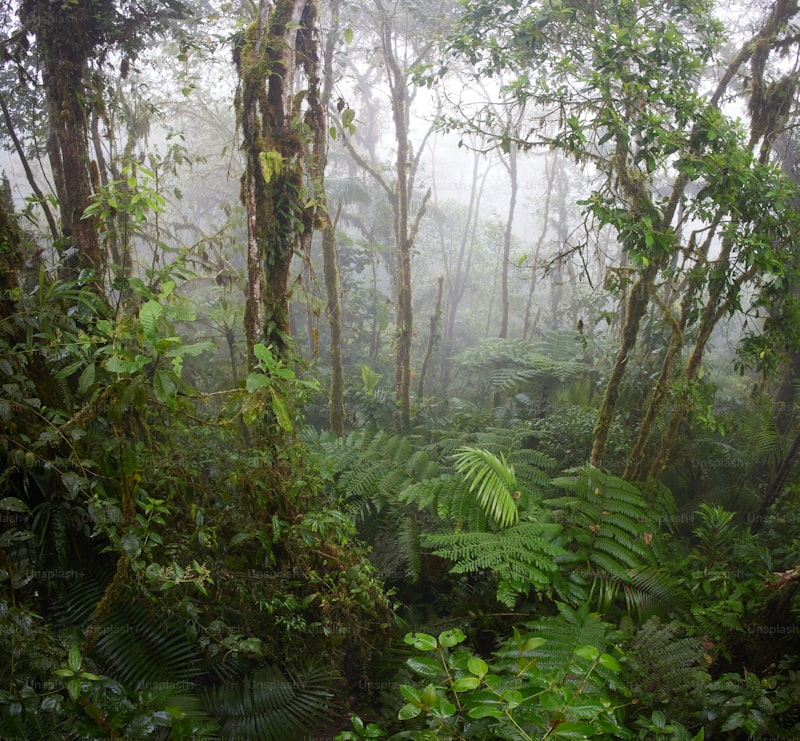
These hotspots are defined not only by the sheer number of species they harbor but also by the level of threat they face. Most hotspots are under immense pressure from human activities such as deforestation, habitat destruction, and climate change. Despite covering just 2.3% of the Earth’s land surface, they support more than half of the world’s plant species as endemics and nearly 43% of bird, mammal, reptile, and amphibian species as endemics.
Their significance extends beyond biological diversity. Biodiversity hotspots provide essential ecosystem services that support human well-being, such as clean air, water purification, climate regulation, and soil fertility. They also offer cultural and aesthetic values, attracting ecotourism and providing livelihoods for local communities.
Conserving these hotspots is not merely a matter of preserving species for their intrinsic value but also for the services they provide to humanity. By protecting biodiversity hotspots, we safeguard our own future by ensuring resilient ecosystems capable of adapting to environmental changes.
In essence, biodiversity hotspots are irreplaceable reservoirs of life that deserve our utmost attention and conservation efforts. They represent nature’s resilience and are a testament to the intricate web of life that sustains our planet. Understanding their significance underscores the urgency of global conservation efforts to protect these invaluable natural wonders for generations to come.
Exploring Earth’s Treasure Troves: The Vital Importance of Biodiversity Hotspots
Biodiversity hotspots are regions characterized by an exceptionally high concentration of species, many of which are found nowhere else on Earth. These areas are not just biologically rich but also incredibly important for the health of our planet. They act as natural reservoirs of genetic diversity, offering a myriad of benefits that extend far beyond their borders.
One of the key reasons biodiversity hotspots are so critical is their role in maintaining ecosystem stability. Think of these hotspots as the heart of Earth’s ecological infrastructure, where each species plays a unique part in the intricate web of life. From pollinating plants to decomposing organic matter, every organism contributes to the smooth functioning of ecosystems.
Moreover, biodiversity hotspots provide essential ecosystem services that humans rely on. Take pollination, for instance. Many of the fruits, vegetables, and nuts we consume daily are only possible because of the work of pollinators like bees and butterflies, which thrive in these diverse regions. Without biodiversity hotspots, our food security would be seriously compromised.
But these hotspots are under threat like never before. Human activities such as deforestation, habitat destruction, and climate change are putting immense pressure on these delicate ecosystems. As a result, many species face extinction, and the invaluable services provided by biodiversity hotspots are at risk of being lost forever.
Unveiling Nature’s Sanctuaries: Why Biodiversity Hotspots Are Crucial for Global Ecology
Imagine a lush rainforest teeming with life, where every plant, insect, and animal plays a unique role in maintaining the delicate balance of nature. Biodiversity hotspots epitomize this richness, acting as natural reservoirs of genetic diversity. They are like treasure troves of life forms, offering us not just beauty but also essential resources and ecological services.
One of the key reasons these hotspots are irreplaceable lies in their role in regulating the Earth’s climate. The dense vegetation in these areas absorbs carbon dioxide, a greenhouse gas that contributes to global warming. By preserving these regions, we mitigate climate change impacts, ensuring a stable environment for future generations.
Moreover, biodiversity hotspots are often the source of new discoveries in medicine and biotechnology. Many plants and organisms found here possess unique biochemical properties that hold potential for developing new drugs or treatments. Protecting these habitats isn’t just about conserving species; it’s about safeguarding potential solutions to human health challenges.
In a world facing unprecedented biodiversity loss, these hotspots serve as beacons of hope. They remind us of nature’s resilience and the interconnectedness of all life forms. By conserving them, we not only protect countless species from extinction but also safeguard our own future.
However, these sanctuaries face numerous threats, from deforestation and habitat destruction to climate change and illegal wildlife trade. Conservation efforts must be intensified, involving local communities, governments, and global organizations working together to ensure these areas remain protected.
Beyond Beauty: The Critical Role of Biodiversity Hotspots in Sustaining Life on Earth
Imagine a world where every ecosystem thrives in perfect harmony, where each species plays a vital role in the intricate web of life. This vision isn’t just poetic; it’s essential for our planet’s survival. Biodiversity hotspots are key players in this global drama, serving as crucial centers of life and resilience.
What exactly are biodiversity hotspots? These are regions with exceptionally high levels of biodiversity, hosting a vast array of species, many of which are found nowhere else on Earth. They act as natural reservoirs, safeguarding genetic diversity and providing invaluable ecological services.
From the Amazon rainforest to the coral reefs of the Pacific, biodiversity hotspots encompass a variety of habitats, each teeming with life adapted to its unique environment. These areas not only support countless species of plants, animals, and microorganisms but also contribute to global processes like carbon storage, climate regulation, and water purification.
Why should we care about these hotspots? Beyond their aesthetic beauty, they are essential for human well-being. They provide us with food, medicine, and raw materials. They offer recreational opportunities and inspire scientific discoveries. Moreover, they contribute to economic stability through industries such as ecotourism and bioprospecting.

However, biodiversity hotspots face unprecedented threats. Human activities like deforestation, habitat destruction, pollution, and climate change endanger these fragile ecosystems. Protecting them isn’t just an environmental issue but a moral imperative for future generations.
Biodiversity hotspots are not just random patches of nature; they are the beating heart of our planet’s life support system. Preserving these hotspots isn’t just about saving cute animals or picturesque landscapes; it’s about safeguarding the very foundation of life on Earth. As stewards of this planet, it’s our responsibility to ensure that these critical areas thrive for generations to come.
Conservation Gems: Protecting Biodiversity Hotspots for Future Generations
Biodiversity hotspots are like priceless gems scattered across our planet, each one holding a wealth of unique species and ecosystems. These areas are not just random patches of land; they are crucial reservoirs of biodiversity, supporting a dazzling array of flora and fauna found nowhere else on Earth. From the lush rainforests of the Amazon to the coral reefs of the Coral Triangle, these hotspots are irreplaceable treasures that we must protect for future generations.
Why are biodiversity hotspots so important? Imagine them as nature’s safe deposit boxes, containing species that provide essential ecological services like pollination, water purification, and carbon sequestration. For instance, the Amazon rainforest alone is home to millions of species, many of which are still undiscovered. Each plant and animal plays a role in maintaining the delicate balance of their ecosystem, contributing to the overall health of our planet.
However, these biodiversity hotspots are under constant threat from human activities such as deforestation, habitat destruction, climate change, and illegal wildlife trade. As we lose these habitats, we not only lose species but also the potential for future discoveries and advancements in medicine, agriculture, and technology that could benefit humanity.

Conservation efforts are crucial in safeguarding these gems of biodiversity. Governments, NGOs, local communities, and individuals all have roles to play in protecting and managing these areas sustainably. Conservation strategies include establishing protected areas, promoting sustainable land-use practices, combating illegal wildlife trade, and raising awareness about the importance of biodiversity conservation.
Frequently Asked Questions
Where are the major biodiversity hotspots located around the world?
Discover where major biodiversity hotspots are located worldwide in this concise FAQ. Explore key regions known for their rich biodiversity, providing vital habitats for numerous species. Learn about the importance of these hotspots and their conservation significance.
What threats do biodiversity hotspots face and how can we protect them?
Learn about the threats facing biodiversity hotspots and discover effective protection strategies. Understand the challenges such as habitat loss, climate change, and poaching, and explore solutions like conservation initiatives, sustainable practices, and community involvement to safeguard these crucial ecosystems.
How do biodiversity hotspots contribute to global conservation efforts?
Learn how biodiversity hotspots play a crucial role in global conservation efforts, focusing on areas with high species diversity to prioritize conservation actions and protect unique ecosystems worldwide.
How can biodiversity hotspots benefit local communities and economies?
Discover how biodiversity hotspots benefit local communities and economies. Learn about their crucial role in supporting ecosystem services, tourism, and sustainable livelihoods, promoting biodiversity conservation while enhancing economic opportunities.
What are biodiversity hotspots and why are they important?
Biodiversity hotspots are regions with exceptionally high levels of species richness and endemism. They are crucial because they support a significant portion of Earth’s biodiversity, including many unique and threatened species. Conservation efforts in these areas are prioritized to protect global biodiversity and ecosystem services.


